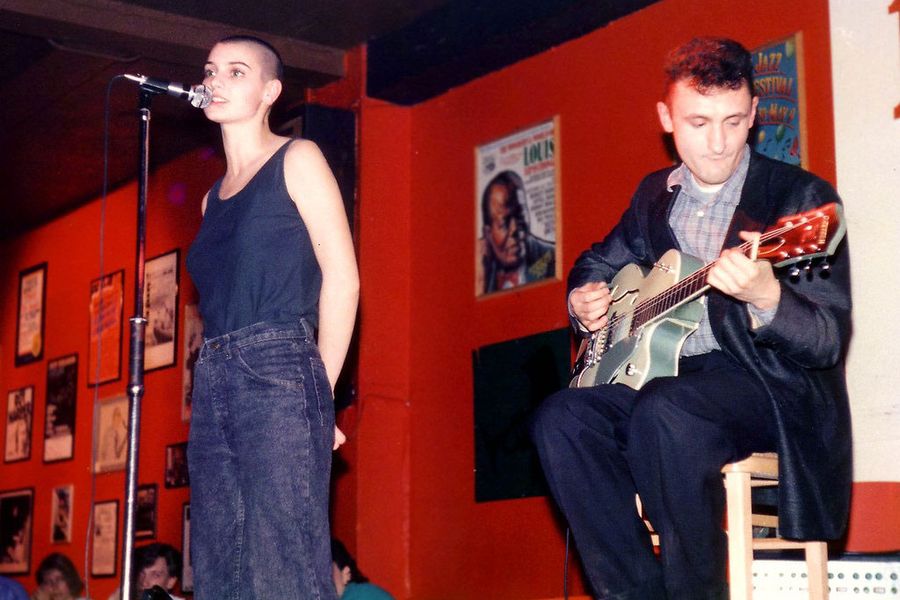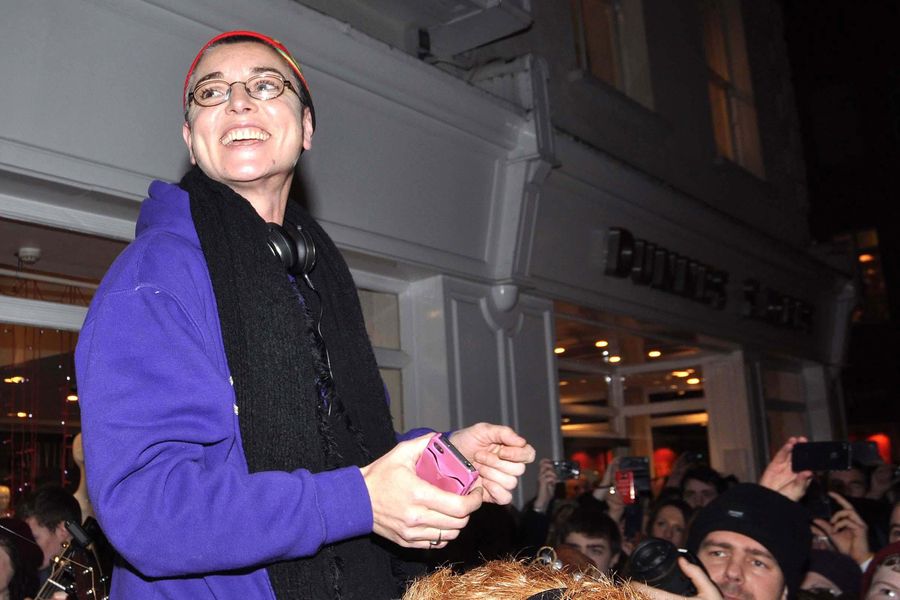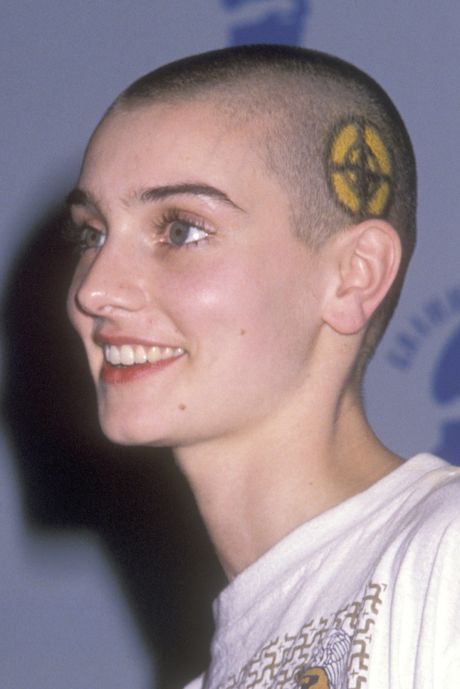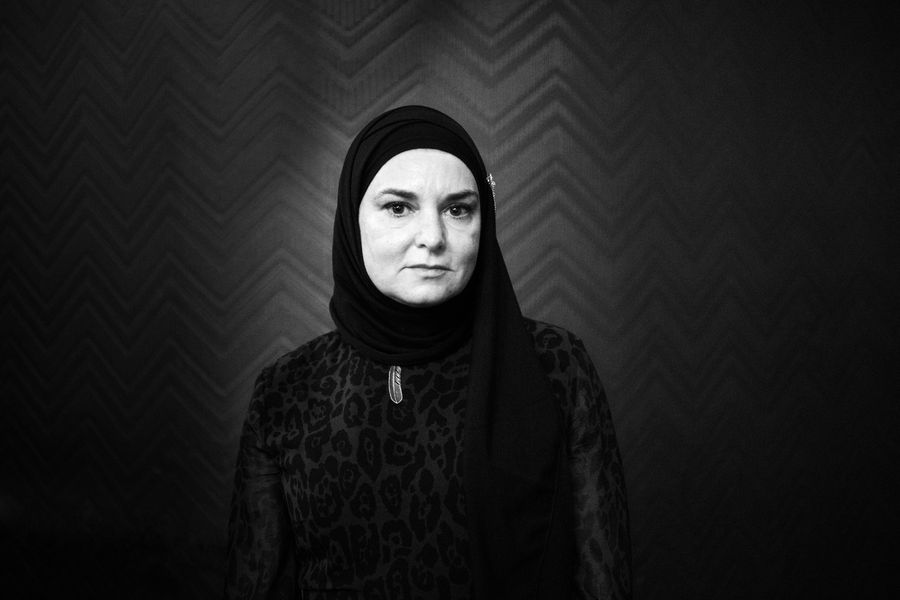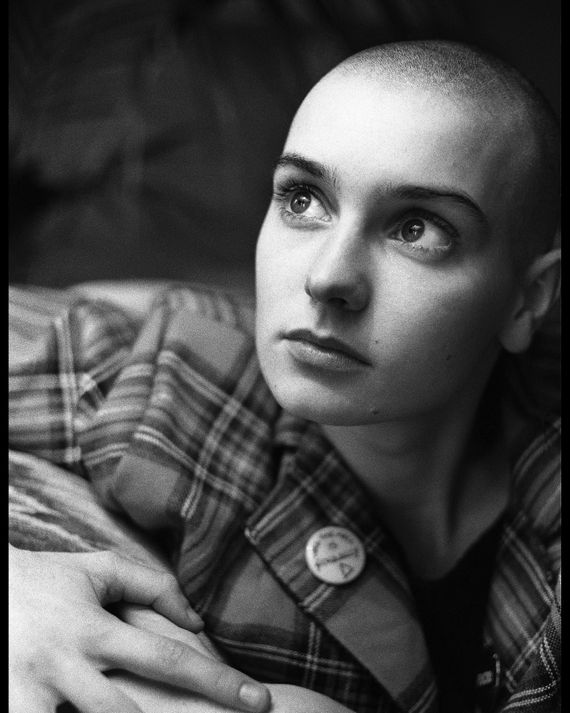
When Sinéad O’Connor died on July 26 of natural causes, an outpouring of love and regret flooded social media over the loss of a massive talent and truth teller. For an artist who primarily regarded herself as a protest singer, pop stardom was never a cozy fit for O’Connor, especially in the early ’90s, when her actions were construed as agitprop or merely baffling. But her views and politics on religion, informed by growing up under an oppressive Irish government and Catholic Church, were deeply personal. Her devout mother was mentally and physically abusive, an experience immortalized in her 1987 single “Troy.” As a child, she was sent to Dublin’s An Grianan school, a notorious Catholic “training center” for troubled young girls with a decades-long history of neglect, where she scrubbed floors and cried day and night. Later, O’Connor was gifted a guitar by a kindly nun, and once free of the institution, began to find her voice, one that would speak out against the various injustices that fueled and repelled her.
Bolstered by the spiky, infectious single “Mandinka,” O’Connor won early acclaim for her 1987 debut album, The Lion and the Cobra, released when she was only 20. The title was culled from Psalm 91, in which God promises to protect his people from the lion and the snake, and the sounds — a blend of Celtic folk, lush strings, and dance music — underscored O’Connor’s soprano, which could segue from hushed confessional to blatant rage, often in the same track. The cover image of her shaved head was a striking, punk-rock middle finger to pop gloss, her deeply soulful eyes tinged with a glint of sadness. But it wasn’t until her sophomore release, 1990’s I Do Not Want What I Haven’t Got, and the video for her melancholic cover of Prince’s “Nothing Compares 2 U,” that she became a global star.
The widespread abuse of underage boys in the Catholic Church was still a veiled secret in 1992, when O’Connor infamously ripped a photo of Pope John Paul II on Saturday Night Live. The fallout was swift and fierce, with her albums publicly destroyed in protest. Thirteen days later, she was mercilessly booed onstage at the 30th Anniversary Bob Dylan concert at Madison Square Garden. O’Connor stood her ground, but the pain and rejection from that moment cut deep. “What occurred to me in those seconds was that if this audience felt like this, then they hadn’t actually listened to what Bob Dylan said, they didn’t actually get it,” she told Time magazine in 1992.
When her third album, Am I Not Your Girl?, failed to make much of a dent critically or commercially, O’Connor began to recede from the public eye. But she remained busy. The joys and traumas of motherhood became a running theme in 1994 with Universal Mother, a reggae-infused confessional that once again probed the psychic wounds left by her mother. After a six-year absence, O’Connor called 2000’s Faith and Courage her “survival” album, a response to a painful breakup with Irish journalist/author John Waters. And the aughts were a mix between her twin loves of traditional Celtic and reggae, with O’Connor enlisting an eclectic group of producers including Wyclef Jean, Dave Stewart, and Brian Eno.
In 2012, mental illness began to affect her work, resulting in a canceled tour. A few years later, O’Connor began writing her memoir, Rememberings, a blistering screed against the Catholic Church and a misogynistic record industry, and a belated catharsis against a world that spit her out after SNL. After expressing suicidal ideation for years, O’Connor revealed in 2018 that she had converted to Islam and changed her name to Shuhada Sadaqat, lending a sense of rebirth and hope to her story. But four years later, the light inside seemed to finally fade out, when her 17-year-old son, Shane, took his own life.
In the months following her passing, and to celebrate what would have been her 57th birthday, we caught up with bandmates, friends, and admirers to whom Sinéad O’Connor inspired creatively and personally, and in many cases, changed their lives.
“You couldn’t miss her”
Mike Clowes (The Lion and the Cobra cowriter and keyboardist):
Myself, John Reynolds, and Ali McMordie were in a band together that had just split. Then Ali got a call about working with a 17-year-old Sinéad. We jammed, wrote, and demoed for a few months, helping her find her feet, exploring different stylistic routes and roots. Then John and I stayed to record The Lion and the Cobra, with two other musicians on bass and guitar. Sinéad was hugely talented with little musical training, so her raw expression was totally unhindered. She was also a lot of fun and keen to build a trusted family around her, which I think we provided for a while. She was into religion and theology and very vocal about human rights. We were playing — well, pastiching — music from across loads of cultures: Irish folk, Middle Eastern with a bit of dub thrown in.
Kathryn Ferguson (director of the Sinéad O’Connor documentary Nothing Compares):
I was very lucky to have gotten into Sinéad at such a young age. My dad was a megafan and bought The Lion and the Cobra when it came out. He literally played it on repeat as we were driving around Belfast, often with rain pelting the windows. It became the visceral soundtrack to my early childhood. She was somebody that my friends and I really looked up to. We were proud and inspired that she was a woman from our own island, at a time when Ireland wasn’t the happiest place to grow up.
Peaches (musician and producer):
The first time I heard her, she blew my mind. Her vocals could be so vulnerable, and then punky, loud, brash, and angry. The emotional range was incredible. I was really into folk music at the time and Sinéad helped me understand how to go beyond folk music. One minute it’d be quiet poetry, and the next a rock song into dance music. She had the song “Troy,” which you think is about a scorned lover, but it’s about her abusive mother locking her out of the house as a child. It’s such a specific pain to her that I don’t think many people knew about. It’s the first song on her first album, and it immediately hits you with this sensation of anxiousness.
Elaine Schock (publicist, 1987 – 1994, 2007):
I got the demo for “Troy” from Nigel Grange, who owned Ensign Records and signed Sinéad. He really liked me, and said I had to do press for her. “Troy” was something like I’d never heard before, and she was, what, 18 years old? It was such a strong song, and I didn’t realize at that point that it was about her mother.
Mike Clowes (The Lion and the Cobra cowriter and keyboardist):
I’d describe Sinéad as, first and foremost, a poet who wanted to put her poems to music. She had complete conviction and her belief system stayed solid throughout her life. She never had a filter on what she said and probably didn’t realize quite how much power and impact she had. She also could be a prankster. We came up with the idea of an orchestra for the song “Troy,” as it was already so grand and dramatic. We spent ages in a small room writing along with our original demo, then hand-scored it to a 20-odd-piece string section. The section was booked on a Saturday morning and it was a tight session because the players wanted to get to the nearest pub to watch a major football game. So, the pressure was on. I finished the scores late Friday and left to get some sleep. When I came in at about 7 a.m. to check if all was okay, I found the box of scores covered in coffee with a mug fallen over on top. It had all dried as one and was unusable. She must have spent over an hour on Friday night after I left photocopying the originals and staging this great bit of fun.
Amanda Palmer (singer-songwriter, the Dresden Dolls):
I first heard Sinéad through my neighbor and mentor Anthony, who was decades older than me, showing me the CD of I Do Not Want What I Haven’t Got. I was completely enthralled, borrowed it and loved it. I wanted a copy for myself so much that I went down to the library, xeroxed all of the CD art, and cut and pasted it together. I even Scotch taped the actual handwritten tracks so that I could tape them straight onto the cassette. I still have it. When I think back on the ingredients that went into my feelings about feminism and what it means to be a survivor of abuse and what it means to be a woman and what it means to be an artist, I find myself really flabbergasted at the twists and turns of fate. The fact is that I didn’t necessarily have to have had a neighbor who handed me that Sinéad O’Connor CD.
Christeene (performance artist, musician):
I’m from the deep, deep Louisiana South, and when I discovered I Do Not Want What I Haven’t Got, it became the soundtrack for this secret sexual relationship I was having. We lived in that album together, which is so soft and sad as fuck. It’s probably a good thing I didn’t get smacked with a cold fish across the face with her first album in the beginning. I might have burned that whole town down.
Peaches (musician and producer):
When I shifted away from folk music and reinvented myself as Peaches, Sinéad was definitely on my mind. She was so strong. And look at the way she dealt with the record labels. They found out she was pregnant and tried to get her to have an abortion. She wasn’t going to be told by anyone how to run her life. She co-produced her first album because she knew what she wanted to sound like, and didn’t want it co-opted or watered down. Also, this sounds very superficial, but it was so important that she was bald. Super beautiful, but like, “I don’t give a shit.” She went on the Grammys in a black bra and jeans. She wore big T-shirts with combat boots, which made her an incredible androgynous icon.
Rob Dean (The Lion and the Cobra guitarist):
Some time in 1986, we were recording in a small demo studio in Kilburn, London. There was some downtime and I remarked to Sinéad that I would like to take advantage of the free time to get a haircut. She said she would accompany me as she wanted to get a flat-top hairstyle. We soon found a men’s barbers where I proceeded to get my hair trimmed but the barber flatly refused to cut Sinéad’s hair because she was a woman. We then wandered along looking for a place, eventually finding a women’s hairdresser. Some time later, Sinéad’s hair was tightly cropped at the sides and back with no gradation whatsoever and a few inches tall on top, which required a good deal of spray to ensure the sides didn’t flop down. To describe it I would say it sort of resembled a thick paint brush. It was flat on the top at least but apart from that there was really no resemblance to the desired style. Sinéad left the salon unsurprisingly less than happy with the result but nonetheless we resigned ourselves to return to the studio to resume recording. On the way home, I believe she stopped to buy an electric razor and when we saw her the next day she was completely bald.
Glen Hansard (musician):
I first met Sinéad in London when I was 17, around ’87. She was like this punk-rock girl, a bit older than me. I was busking and she came and watched us. I remember just being so fucking aware of the fame she had, and how surreal it was to have her watch us on Grafton Street in the middle of Dublin. And within two or three minutes of her stopping, literally the whole street shut down. You couldn’t move. She was a walking icon, and people adored her. She still had this kinda underground punk thing, but because she was so striking with that skinhead, you couldn’t miss her.
Elaine Schock (publicist, 1987 – 1994, 2007):
In the beginning, it was just a wonderful time. Sinéad was delightful. She wasn’t ever painfully shy with me. Most of the journalists that talked to her fell in love, as she was very easy to fall in love with. We were both young parents, and she would come with me to pick up my daughter at nursery school. We came from different backgrounds, but we had a lot in common. We would laugh and take walks. I wasn’t just a publicist. We were friends, and I was always there for her. Those were heady days. They were positive, fun, and magical, where you could see this thing becoming bigger than we could ever imagine.
I said softly, “I don’t think I can get you out of this.” She said, “Oh no, I don’t want you to.”
Elaine Schock (publicist, 1987 – 1994, 2007):
I don’t think there was any sort of conscious self-sabotage with SNL and ripping the pope photo. She was supposed to do a song called “Scarlet Ribbons,” but during dress rehearsal, she told me she wanted to do the Bob Marley song “War.” SNL agreed, and during rehearsal, she held up this beautiful photo of a baby. She didn’t say, “Fight the real enemy,” like she ended up saying live. For showtime, the camera knew to hold on that picture of the baby.
Jim Downey (former SNL head writer/producer):
I was a big fan of Sinéad’s, so I was right there in front of her when she performed that night. After she ripped the photo, there was just … nothing. There was no panic. It was sort of like, “Wow. Huh. That was weird.” I don’t remember Lorne being freaked out. I was raised Catholic and wasn’t hugely offended by it. We didn’t re-edit for the West Coast, which we could have done, and used the dress-rehearsal version. No one was tearing their hair out or anything.
I didn’t understand her message, which I think was the main issue. The scandal of child abuse in the Catholic Church in Ireland might have been a big issue at that time, but in 1992, I don’t remember it being a big issue in the United States. It was something that unfolded over decades. So, from our end, it was mostly just confusion.
Elaine Schock (publicist, 1987 – 1994, 2007):
I was sitting where they have popcorn and brownies right outside the studio, but I could see her performance on the monitor. I’m stuffing my face when all of a sudden she has a picture of the pope. [Laughs.] I didn’t know what to think, but I stopped eating, obviously. The camera only knows to go on the picture, and she rips it up. Sinéad didn’t really know what to do. There was no applause and just dead silence. Sinéad went back to her dressing room, and was happy as a little clam that she’d pulled this off. Her manager was super pissed. I was always pretty gentle with Sinéad, so instead of freaking out, I just said softly, “I don’t think I can get you out of this.” She replied, “Oh no, I don’t want you to.”
Peaches (musician and producer):
I love the ripping of the pope. She saw the Boomtown Rats rip a picture of another musician on TV and thought it was cool. The fact that the pope picture was the exact one that her mother had on her bedroom mirror was such a personal statement. It was a way to break free from her mom and the church.
Mike Clowes (The Lion and the Cobra cowriter and keyboardist):
Ripping the pope was one of the most powerful challenges to the U.S. identity and the reaction did shape the rest of her life.
Connor Deegan (bassist, Fontaines D.C.):
I actually did my school dissertation on Sinéad, and growing up in Ireland, you’re typically made aware of her from your parents’ generation. They painted her as this unhinged mad woman who questioned society. As I got older, and to the age where you start to question things, you realize everything isn’t just as your parents told you. I realized that everything Sinéad said was completely right.
There’s a mentality in Ireland of trying to keep a delicate kind of peace. Everyone wants to toe the line and not say something that would rock the boat. I believe that it comes from our history of, not only colonization, but of a colonization of ideas from the Catholic Church. We were made very malleable and docile, because if we stood out of line, we’d be severely punished for it. If you speak up about an injustice, you’re destabilizing our whole view and our whole life, and you’re gonna bring back past trauma. You’re gonna open us up to being really hurt, and Sinéad paid the price for that.
Kathryn Ferguson (director of Sinéad O’Connor documentary Nothing Compares):
When the backlash against her began in 1992, it was really demoralizing to witness this person that I’d held with such regard being absolutely vilified and ridiculed. Hers was a story that I just couldn’t shake off. As I got into my late teens, I was always that person at every party blasting Sinéad. I was always talking to everybody about her, and I wanted to show people YouTube clips of what she did on Saturday Night Live. I first got to meet and work with her in 2012. It brought up so many emotions. It brought up the really strong feelings I’d had as a teenager, and reminded me why her story was so important to me. It was then that I decided to take on the nearly decade-long pursuit of making the documentary. The film is very focused on five years in her life, roughly 1987-1992, and her trial by media. What we really wanted to do was keep the viewer immersed in that time and not drag you out of it. We wanted her to speak as an older woman with hindsight to what had happened.
Rain Phoenix (singer-songwriter, actress):
She actually voiced her opinions — she took on the patriarchy, the church, racism, and sexism directly. She was unapologetic, unwavering, fierce, and authentic. All said through her soft-spoken angel of a voice. She gave zero fucks about the repercussions of speaking truth, because it was the truth, so she was going to speak it. That did not go over well with the powers that be. They made her suffer for it. They tried to bury her like a pop-star Joan of Arc. They did their best to burn her at the stake. And as a teen growing up in the U.S. at that time, they did a pretty good job of it, stripping her of any credibility or opportunity to continue to share the truth. It was before the internet and in some ways censorship was easier. Her voice all but disappeared, while their skewed version of Sinéad was blasted on repeat. I didn’t watch a lot of TV, but I remember how prevalent mainstream media’s judgment of her SNL appearance was. It felt as if she was being made an example of to all artists: “If you choose to use your voice to fight injustice in this way, we will silence you, too.”
“Since her passing, there’s been a giant crack in the Irish psyche”
Christeene (performance artist, musician):
One of the things that I saw happening when she left this realm was people in the queer community holding her as a very powerful touchstone and foundation for a lot of their life choices. Like anyone in the LGBTQ community, she had to go through a lot of madness from dipshits in the United States. Any woman who’s gone through shit and survives is always put up in the echelon of the queer community. Sinéad’s up there with Judy Garland and Liza Minelli. Put her up there with poor Tammy Wynette too, who got smacked around by that shithead George Jones. There’s a cosmos inside of those women that really lights fire in a lot of queers.
Connor Deegan (bassist, Fontaines D.C.):
Being gay in Ireland was illegal until 1993, as was gay marriage until 2015, and abortion until 2018. Sinéad was really outspoken about those issues, and speaking truths that were accepted in other countries. I think it’s really tragic that she wasn’t recognized as a forerunner for all that. Musically, she was our Bob Dylan. I wish I could thank her for speaking up when no one else had the courage. I’d thank her for sticking with her truth and not allowing herself to be compromised, even though it was really, really hard to do.
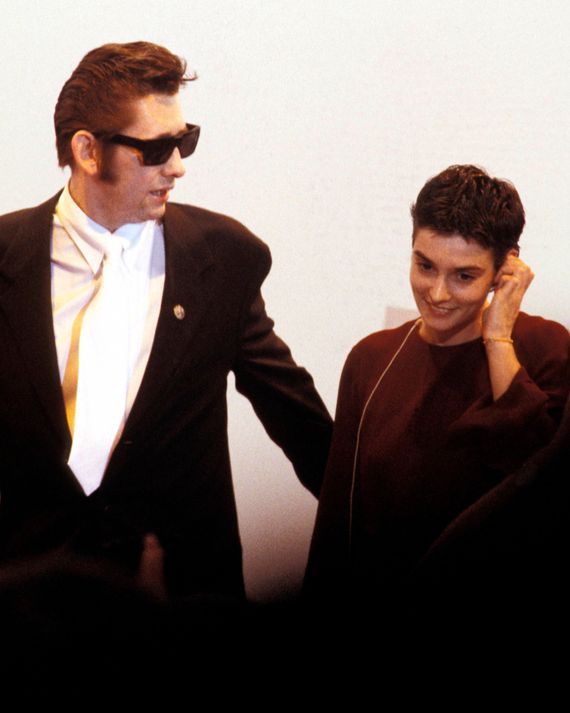
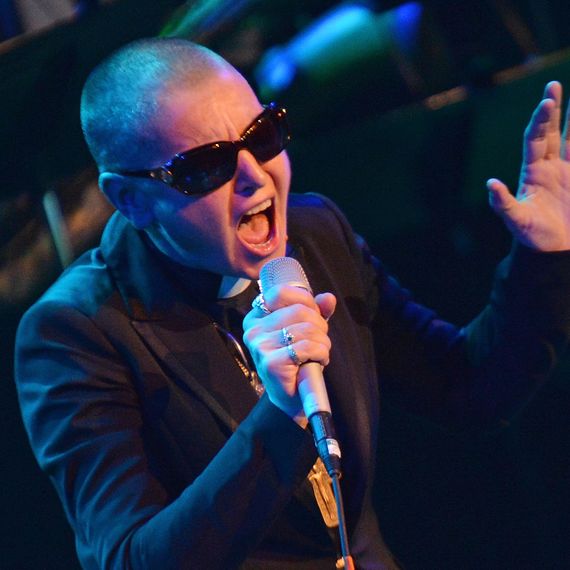
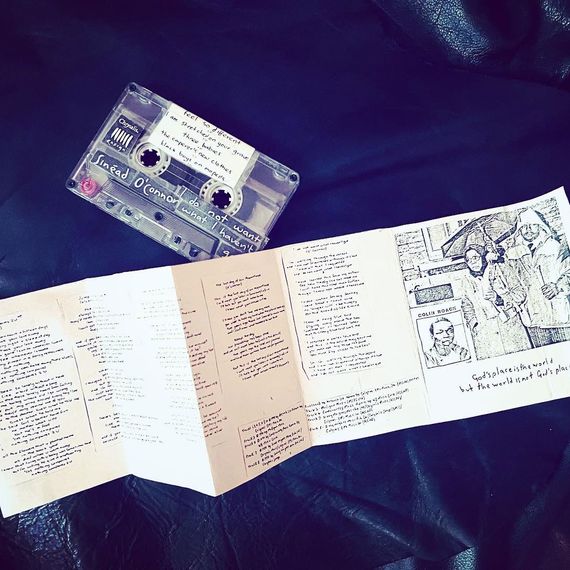
Glen Hansard (musician):
She meant a lot to me and a lot to my people, but it was a complicated love. Since her passing, there’s been a giant crack in the Irish psyche, because people don’t know what to do with the information. People tended to write her off as attention-seeking or crazy. I’m fucking devastated to have lost her. We didn’t mind her well enough, and she needed minding like anyone else. When I’d call her, or when we’d meet, I didn’t know what Sinéad I was gonna meet. She could be dark and shadowy, and then she could be the brightest light you’ve ever met.
We crossed paths a lot in life, but the best hang I had with her was probably at Shane McGowan’s 60th birthday. Everybody, including the president of Ireland, came out. Nick Cave came over, along with all these Irish musicians, and Shane had requested that Sinéad and I do “Fairytale of New York.” It’s a strange thing to admit, but nobody wants to touch that song. [Laughs.] Sinéad and I met, and she said, stammering, “I’m not coming to the show. I can’t do it. I just can’t!” I didn’t want do it either, even though it’s a fucking great song. Shane suggested I do it with Lisa O’Neill, who’s one of our extraordinarily great talents. It was a great moment in the show, and Sinéad sat watching us, probably thinking, Thank God I’m not doing this. Then she went out and did an old song from Shane’s first punk band, the Nips. She did an a cappella version, and that’s very Sinéad. She wanted to go deep, you know? She didn’t wanna do the hit. I think that’s a nice summation of how she lived her life.
Christeene (performance artist, musician):
I performed The Lion and the Cobra as a stage show, and it was my way of holding a light up, like an old gassy lantern up in the night sky and hoping that on some distant coast with rocks getting hit by them Irish waves, that maybe she could see that. It’s so easy to just hold a grudge or not pull the energy up to let someone know that you’re just fucking thinking of ‘em and that they matter. I know she knew she mattered. Even though she probably smoked more than Bette Davis and Joni Mitchell, she wouldn’t have survived that long had she not known.
Sinéad, I have enough airline miles right now to fly anywhere you are. And if you would like, I will take up smoking again and show up with cartons of cigarettes and whatever favorite liquid you want to drink, and some nibbles. How about we go find some shitty waterway in some shitty town and sit next to it and smoke and talk? Let’s eat some weird shit and just not give a fuck about anything for a few hours, not care about responsibilities, and only care about you and me.
Elaine Schock (publicist, 1987 – 1994, 2007):
I worked with her for Theology, which was a record down the line. The shows were great. The reviews were great. We had fun together and we still laughed. We still talked about kids and men. But there was an edge when we talked that wasn’t there before. She could just turn, and at that point she had been diagnosed as bipolar. After she died, I was angry when all of a sudden people loved her so much. When we needed them to speak up for her after she tore up the pope, nobody was there. I thought, Where the hell were all you people? They were mean and cruel, and Sinéad internalized that.
Kathryn Ferguson (director of Sinéad O’Connor documentary Nothing Compares):
The last time we spoke we were talking about the film. She was extremely supportive and really happy with the response. I think she agreed to the film because we never wanted to detail 30 years, all the ups and downs. We wanted her to talk about this key moment in her life, and really tell us everything she could about that. We weren’t asking very much of her at all. We needed one interview and one interview only. We weren’t gonna follow her around with a camera. She had a real irreverence actually, and was very funny. I think that’s something that got greatly missed by the media’s perception of her. She was crude in a fun way, and always very much herself. She’s always been extremely authentic and always said exactly what she thinks, which made her very difficult to control. Nobody could tell her what to do.
Peaches (musician and producer):
I wish I could thank her and tell her how much I love her. I’m sorry that we didn’t stand by you when you needed us, and I wish you knew how important you are to me and so many people. We’ll do our best to carry on your legacy.
Amanda Palmer (singer-songwriter, the Dresden Dolls):
I look at Sinéad as a machete-cutting truth teller. She cut this path with her way of being because she was an unafraid person. Even if she was afraid in her daily life, when she took to the microphone and took to the stage, she cleared this massive path for women to be unafraid, especially as survivors of abuse. I was sexually assaulted when I was 14 and could never write enough songs about it. I look back at that choice to write songs at 17 about what it felt like to survive a sexual assault, and I can thank Sinéad for that because all of a sudden it was an option. The other idols that I had, like Cindy Lauper and Madonna, were amazing trailblazers in their own way, but they weren’t sitting down and looking you in the eye and saying, “This fucking happened to me, and I’m going to write about it, and you’re going to know. I’m just going to tell you the truth.” I wish I could stare deep into the pools of her beautiful eyes and say thank you for everything you gave us.
Kathryn Ferguson (director of Sinéad O’Connor documentary Nothing Compares):
Thank you, Sinéad. From myself and the women of Ireland. You’ve been a guiding torch through many dark decades for us. I hope a takeaway from your story is that we can all learn to treat people a bit more kindly. The loneliness you had to endure was unforgivable, and I hope that people can learn to be as compassionate as you always were.
Rain Phoenix (singer-songwriter, actress):
Yes, she was controversial and ahead of her time, but aren’t all our favorite artists controversial and ahead of their time?! Isn’t that what art is for? To challenge us, to disturb us, and to break open our hearts? My heart was broken at the news of her passing. I wish I’d met her. I wish I’d had a chance to tell her what she meant to me, to the trajectory of my life, my music, my voice. I know her voice changed things. And I know she will continue to inspire people and create change through her memory. I wish we were nicer to her when she was here. I hope we can make peace with her untimely death by centering kindness with each other. Life is hard and death comes to all of us, but instead of trying to find fault in each other, maybe we could be asking the question, “How can we support each other while we are here?” May our failure to support her in the past inspire us to do better in the present, so we can support each other into the future. Long live the memory of Sinéad O’Connor.


